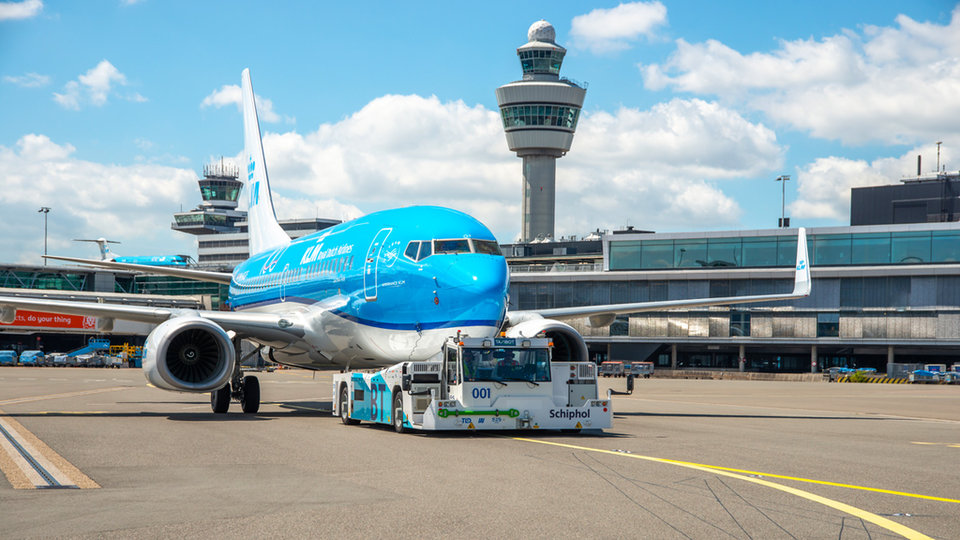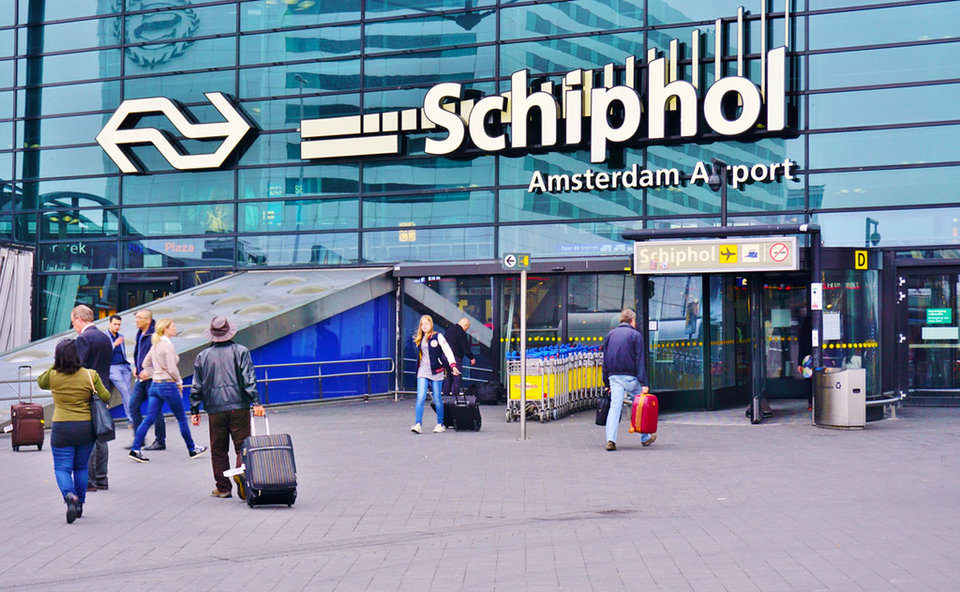Enviroment
Driving sustainability with Amsterdam Schiphol Airport’s taxibot
Amsterdam’s Schiphol Airport is piloting a new sustainable taxiing solution that involves the use of a taxibot to keep aircraft engines off during taxiing. Ilaria Grasso Macola speaks to the project’s main stakeholders to find out more about the trial and the future of sustainable taxiing solutions.
Amsterdam’s Schiphol Airport is currently piloting a new system that allows aircraft to be brought to the runway with their engines off.
The trial, which is set to take place between April and June, is part of a feasibility study into sustainable taxiing, which will be completed in the autumn of 2020.
The project – carried out in collaboration with the Dutch Ministry of Water and Infrastructure, Air Traffic Control the Netherlands (LVNL) and major airlines including KLM – involves the use of a taxibot, a special tow vehicle which experts claim will save between 50% and 85% on fuel consumption during taxiing operations.
Image: Amsterdam Schiphol Airport
What is the project about?
Royal Schiphol Group head of innovation Hassan Charaf describes sustainable taxiing as “different solutions to move an aircraft from A to B on an airport without using its jet engines”.
According to Charaf’s definition, the term encompasses both onboard systems, as well as separate structures that are not part of the aircraft.
Taxibot falls into the second category, as it is a tow vehicle that carries the aircraft to the runway. Belonging to Smart Airport Systems, a subsidiary of ground-handling equipment company TLD, Schiphol’s taxibot is one of ten in the world and is powered by a combination of electric and diesel engines for the benefit of the environment.
“Measurements will be taken during the testing phase to see what fuel savings can be made in practice, which can then be used to reduce emissions at Schiphol,” says Charaf.

Image:
The taxibot is expected to significantly reduce fuel consumption during taxiing operations. Image: Amsterdam Schiphol Airport
The taxibot project is also part of the Action Programme Hybrid Electric Aviation, which is led by the Dutch Ministry of Water and Infrastructure alongside stakeholders from the aviation sector. The programme’s aim is to foster long-term plans to achieve carbon neutrality in the industry by 2070 or earlier.
According to a spokesperson for the Ministry of Water and Infrastructure, the government’s role in the trial is in fact to “support the research and implementation of sustainable taxiing and learn from this project to shape future policies to advance the technology".
Measurements will be taken during the testing phase to see what fuel savings can be made in practice
Another chapter in Schiphol’s sustainability history
For Schiphol, sustainability is the main rationale behind the project. The airport has been on a journey towards carbon neutrality since 2012, when its buildings and resources became CO2 neutral.
“We will reduce compensation for remaining emissions by reaching our goal of zero CO₂ emissions by 2030. Sustainable taxiing is very important to reach this goal,” adds Charaf.
The airport took the reins of the trial because of its central position within the Netherlands’ aviation operations. “Schiphol, [just like] any airport, is the spider in the web of the ground operations side of aviation, and therefore the taxi processes,” he says.
“Providing an integral approach is necessary for these sustainable taxiing solutions to succeed and with the airport in the middle of it all, it seems logical that the airport leads this transition.”

The exterior of Amsterdam Schiphol Airport in 2015. Image: EQRoy / Shutterstock.com
As part of its role, Schiphol is in charge of facilitating the integral outcome of the feasibility study, which includes looking into how to integrate the project into daily operations, as well as studying its practicality on a large scale and the time frame needed. Additional responsibilities include processing feedback, writing reports and being in charge of supplier relations.
“By transferring operation staff to the innovation department, innovation and operational expertise can thrive,” adds Charaf. “A broad knowledge base of airport operations is necessary to run tests and ask the right questions to the right people. The combination [of] innovation and operations leads to the expertise necessary to cope with the whole spectrum of questions.”
Providing an integral approach is necessary for these sustainable taxiing solutions to succeed
Beyond Schiphol: the future of sustainable taxiing systems
Born out of the need to reduce CO2 emissions, experts believe that the project and, more broadly, sustainable taxiing solutions present several benefits.
“Firstly, the project is vital in gaining an understanding of the possibilities and feasibility to implement sustainable taxiing in a safe manner in the current operational concepts of Dutch airports,” says the Ministry spokesperson.
“Secondly, it looks at the scalability of the application of sustainable taxiing. Thirdly, it will teach us more about bottlenecks in regulation and help us understand what policy interventions are desired to scale and implement the solution.”
Other benefits range from financial savings to the reduction of nitrogen, noise and ultra-fine particle emissions.
The project is vital in gaining an understanding of the possibilities and feasibility to implement sustainable taxiing
Present and future challenges
Despite its main benefits, stakeholders are encountering different challenges in the development of the project, the main one being keeping all stakeholders involved.
“The taxibot concept requires a change in how we do things around the airport and that is a challenge for every stakeholder involved. In order to develop a scalable solution in the future, effort from all parties involved in aviation is necessary,” Charaf explains.
“The whole aviation sector needs to work together for the next decade to make it succeed and that will require a lot of energy from everyone. It will be a major challenge to keep the energy flowing and to keep the eye on the long-term prize.”
The ongoing Covid-19 pandemic has also had a mixed impact on operations. According to the Dutch Ministry, “the physical availability of the technical project support has been limited due to the travel embargos. This has been challenging and has caused some delays, but these have mostly been resolved.”
To address this issue, the airport has put in place health and safety solutions that include maintaining a 1.5m distance and having fewer people on site.

A side-on view of the taxibot. Image: Amsterdam Schiphol Airport
However, despite delays, the coronavirus pandemic has also presented the trial with new opportunities. “The decrease of planes taking off on the runways due to the pandemic provides a little more space for experimenting with sustainable taxiing,” adds the spokesperson. “Moreover, the parties involved also have a bit more capacity available to dedicate to the project.”
“It is quiet on the airside, therefore there is more space for testing and more aircraft are available. In the original plan, we would do this test with empty aircraft at night. Now we can do it during the day,” Charaf adds.
As for the future, experts believe there is a long way to go before using the taxibot on a large scale.
“It will be years before the technology is further developed and suitable for every type of aircraft. Our expectation is that around 2030 the majority of Schiphol can be served with a taxibot,” concludes Charaf.
“We are sharing our knowledge to motivate other airports and airlines to start with sustainable taxiing too.”
The physical availability of the technical project support has been limited due to the travel embargos